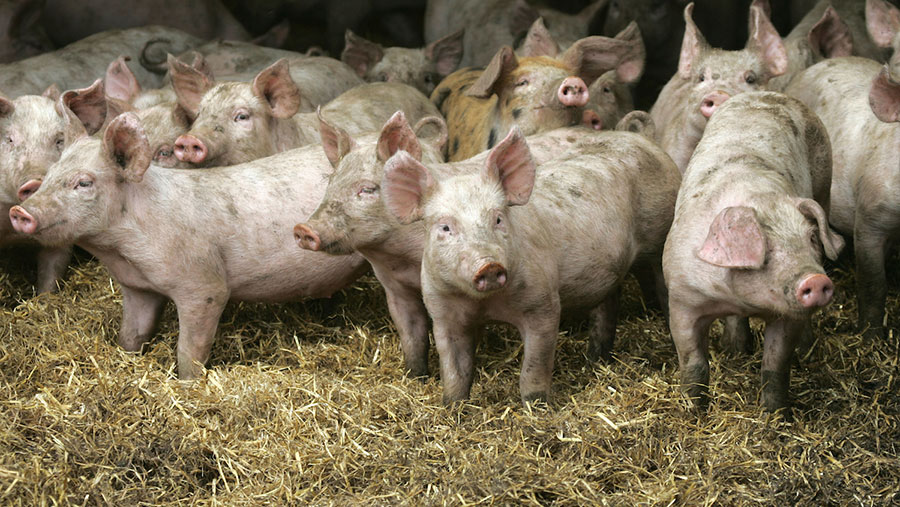June census shows pig numbers struggling while OSR up
 © Tim Scrivener
© Tim Scrivener Breeding pig numbers in England are at their lowest for 20 years, new figures show.
Defra’s June Survey of Agriculture results were published on 31 August and put the total number of female breeding pigs at 261,000 – a 17% year-on-year fall since June 2021.
The data, which provides a snapshot of livestock numbers and farmland use in England between 2021 and 2022, also shows a 24% decrease in other breeding pigs to 68,000 animals.
See also: How to stress-test your farm business against high inflation
The national herd now stands at just over 4.1 million pigs, which represents a 3% decrease on 2021.
Meanwhile, for cereal growers, it is oilseed rape that has dominated the shift in trends in the arable sector.
The total area increased by 20% to 323,000ha in 2022, mainly due to a 21% increase in the winter-sown area, which stands at 317,000ha and accounts for 98% of the total oilseed area.
But despite the increase, the overall downward trend in area of winter oilseed rape continues since its peak in 2012.
The spring-sown area of oilseed was down slightly between 2021 and 2022, and accounts for only 2% of the total oilseed rape area.
This year’s harvest of cereals overall was one of the earliest on record, with an estimated 92% of the British harvest complete by 16 August.
Early industry indications show yields of winter barley are slightly above the five-year average.
The census suggests that wheat yields vary between good and average due to dry conditions, and that winter oilseed rape yields vary between regions where crops have been affected by poor establishment, water stress and pest and disease infestation.
According to the survey, there has also been a sharp fall in the acreage of land sown to barley, with 782,000ha grown in 2022.
It was a contraction in the acreage of spring barley grown that was responsible for this – it decreased by 13% while crops of winter barley rose by 7.7%, to 372,000ha.
However, spring barley still accounts for 52% of the total barley area.
Data by sector
Cereals and oilseed rape
The total area of cereals and oilseed rape grown in 2022 was 2.97m ha.
The English wheat area experienced a 0.8% increase to 1.67m ha.
For barley, plantings were down by 4.2%, to 782,000ha.
Winter barley rose by 7.7% to 372,000ha while spring barley decreased by 13% to 410,000ha.
Barley production followed a more typical pattern, following the decrease seen in 2020 when weather affected autumn plantings.
The total area down to oats fell by 12%, to 140,000ha.
Cattle
The number of cattle and calves in England has fallen by 0.7% and now stands at 5.1 million head.
The breeding herd decreased slightly, falling by 1.3% to 1.7 million animals in 2022, but it continues to account for just over one-third of the overall total number of cattle in England.
Dairy herd numbers fell by 0.7% and now stand at just under 1.1 million animals, accounting for just under two-thirds of the breeding herd.
The beef herd has also seen a downward trend, falling by 2.2% to 651,000 animals.
Sheep
Sheep and lamb numbers were up by 2%, to just over 14.9 million.
Lambs account for half of all sheep and numbers increased by 1.5%, to around 7.5 million.
The female breeding flock accounts for a further 47% of all sheep and also saw an increase in 2022, rising by 2.9% to 7.1 million.
Pigs
The female breeding herd stands at 261,000 head, with other breeding pigs at 68,000.
Fattening pigs account for 92% of all pigs, with their numbers at almost 3.8 million.
Although this was a decrease of 1.4% when compared with 2021, it is still higher than in recent years.
Poultry
The number of poultry in England has fallen by 1.6% to 139 million.
Breeding and laying fowl numbers were down by 2.6% to 32.6 million, while broilers experienced a smaller decrease, falling by 0.5% to 97.3 million.
